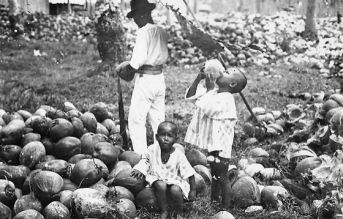
During year 1961, the total amount of production of this agricultural commodity hits top oneamong all crops, with the value of 1,344,819 tonnes. However, it did not bring the most income to Malaysia. The reason behind was because almost 70% of the total production was consumed domestically.Sum of coconut production quantities in Malaysia from year 1961 to 2013. (Data source from FAOSTAT). Than in year 1984, it is officially stated that the total agricultural land use of coconut plantations in Malaysia were 266,202 hectares. The acreage then hit the highest point in the following year with an amount of 334,100 hectares. In 1995, a declination was recorded to roughly 250,000 hectares. Nevertheless, Malaysia was still a net exporter of coconut products, with a total export value of RM165.2 million (US$43 million). Moving on to the early 20th century, the oil crop industry started to flourish in Malaysia. The increased competition from other oils (eg. palm oil, soy bean oil) has caused coconut plantations to be less focused. In year 2012, coconut production quantity significantly dropped to 606,530 tonnes (from top five among Malaysia’s agriculture commodities in year 1985 to top eight in year 2012). In year 2014, Malaysia is no longer a coconut exporter. Supply and Utilization Accounts (SUA) of Selected Agricultural Commodities, Malaysia has shown statistics that the self-sufficiency ratio (SSR) of coconuts was no more 100% (96.7%) while the import dependency ratio (IDR) raised up to 11%. As coconut crop is still being cultivated by smallholdings without using recommended varieties, a declination in yield and farm productivity is now observed in Malaysia, while in the meantime, demands for coconuts are rising in the market. Thanks to all readers regarding thi article.
By,
M Anem,
Senior Agronomist,
Bandar Baru UDA,
Johor Bahru,
Johor.


No comments:
Post a Comment